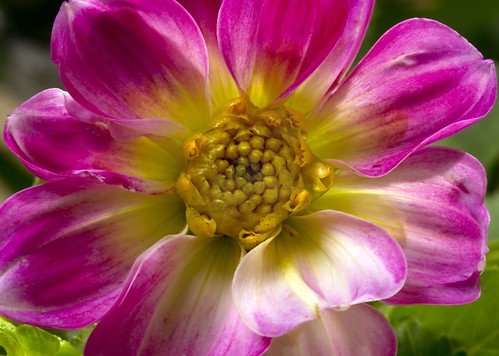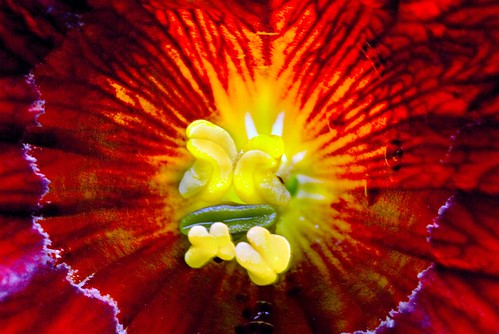“Slow flash” is an oxymoron because there can be no such thing as a slow flash exposure. A flash duration is usually between 1/1000 of a second and 1/20,000 of a second, depending on the strobe. By most normal definitions, a flash burst cannot be slow.
In default camera modes it usually synchronizes with a camera shutter speed of 1/60 of a second or 1/125 of a second (1/60 of a second with the Nikon dSLRs such as the Nikon D70 or Nikon D200). Whatever the shutter synch speed, the light from the flash is fundementally controlling the exposure, although depending on circumstances ambient light can play a role as well.
Nikon uses “slow flash,” along with “slow synch,” as their rather obscure terms for an exposure that combines a flash burst with a long time exposure (of up to thirty seconds). With this technique, you’ve got to set the flash into this synch mode. Next, you need to know that it will only work when exposure is set to automatic or aperture-preferred modes.
Even in slow flash mode, of course, the flash isn’t slow: it’s the exposure that is used in conjunction with the flash that is slow.
The idea is that you could put the camera on a tripod, stop the aperture all the way down (say to f/40), and take a time exposure of a couple of seconds combined with a flash burst.
Once I figured out how to set the camera up in slow flash mode—and I think you can believe me when I say the Nikon manuals are not a model of good expository technical writing, this documentation is difficult to decode—it occured to me that I could use slow flash to create a stained-glass effect using the natural translucence of flower petals. In other words, my idea was to use the flash part of the slow-flash exposure to create seriously intense backlighting.
The photograph of the dahlia at the top of this story used the technique, with a Nikon SB-800 unit mounted on a tripod directly behind the flower (and pointed straight at it) and connected via wireless at the camera, which controlled the exposure in aperture-priorty mode. The overall exposure of the camera, which also was tripod mounted, was at ISO 100, for 1.3 seconds, at f/36 using my 105mm macro lens.
This extreme macro photo of a Salpiglossis sinuata (“Painted tongue”) really shows the stained glass effect:
View this photograph larger.
For this photo, both the camera and strobe were tripod-mounted and connected via wireless. I used the less powerful SB-R200 unit (rather than the SB-800) to create the backlighting. My overall exposure was 2.2 seconds, f/40, at ISO 100 with my 105mm Nikon macro lens with extension tubes and a close-up filter.

